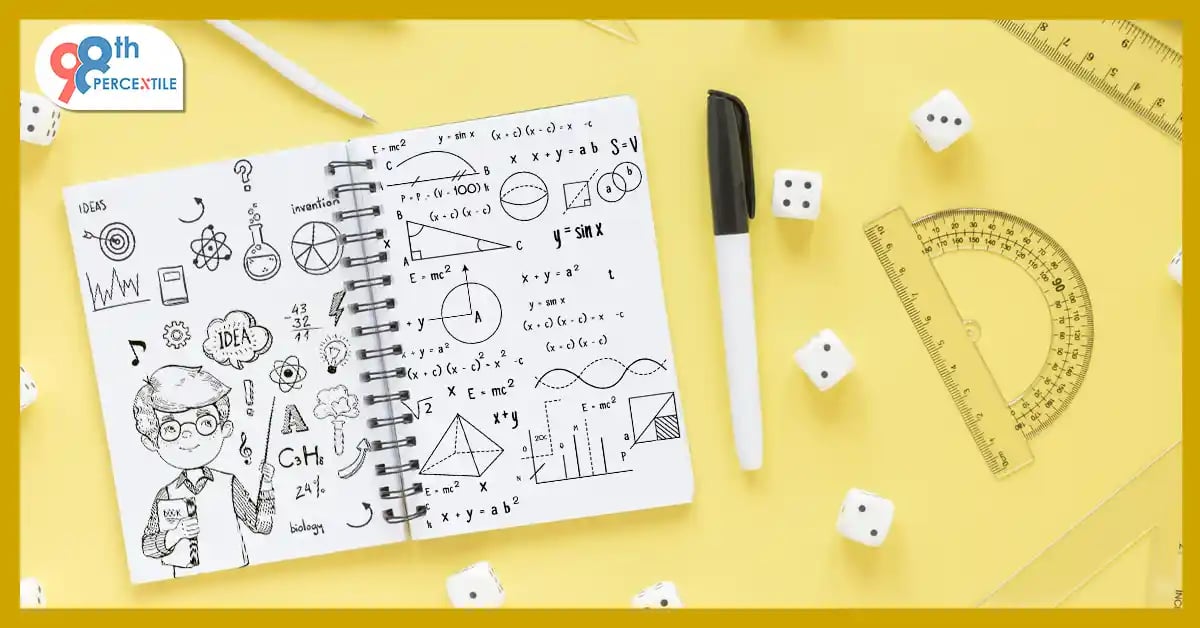Multiplication is not just about memorizing times tables; it's a fundamental skill that empowers us to solve complex problems, analyze patterns, and make informed decisions in various fields. From elementary school classrooms to advanced scientific calculations, multiplication plays a fundamental role in shaping our understanding of mathematics and its applications in various fields.
Why Master Multiplication?
Mastering multiplication unlocks a superpower - effortless calculation. From figuring out grocery bills to estimating travel times, this skill helps through our everyday life struggles, saving your time and reducing stress.
Ready to Level Up Your Math Game?
Here are some secret weapons to transform your multiplication journey:
- Pattern Power: Numbers whisper secrets! Look for patterns like the "5s table" ending in 0 or 5, or the "9s table" where digits add up to 9. These clues become your map to navigate the number patterns.
Start Your Child's Math Journey Now!
- Real-World Quests: Turn math into an adventure! Calculate the area of a pizza for a perfect slice division (and avoid melty disputes!). Estimate how long it takes to walk a dog 4 times around the park. Suddenly, multiplication becomes a tool for exploration, not a test of rote memorization.
- Number Bonds: Break down multiplication into number bonds. For example, when multiplying 6 by 7, think of it as 6×5+6×2. This strategy utilizes known facts and makes the calculation more manageable.
- Communitive Property: Leverage the commutative property of Multiplication Chart (changing the order of the factors doesn't change the product). If you know 4×7, you also know 7×4.
- Real-Life Challenges!
- Grocery: You're at the supermarket. Apples are $2 each, and you need 7. How much will they cost? Use your 7s table magic!
- Planning of Party: Planning a pizza party for 12 friends. Each need 2 slices. How many pizzas do you order? Unleash the distributive property - (12 friends * 2 slices/friend) = total slices.
- DIY Detective: Building a bookshelf with 5 shelves that need 3 brackets each. How many brackets do you need? Time for some multiplication mayhem! (5 shelves * 3 brackets/shelf) = total brackets.
- Calculating Area: Suppose you're laying tiles in a rectangular room with dimensions 8 feet by 6 feet. The total area is found by multiplying the length and width: 8×6=48. This demonstrates how multiplication is essential in determining areas in real-world scenarios.
- Budgeting and Expenses: Real Life Example: Planning a road trip? If your car averages 25 miles per gallon, and you want to estimate the cost for a 300-mile journey, multiply the miles by the cost per gallon to get an estimate of your expenses.
- Recipe: You find a delicious cookie recipe that makes 12 cookies, but you want to bake 36 for a party. Multiply each ingredient quantity by 3 to adjust the recipe accordingly.
- Organizing things: You have 5 bookshelves, each with 9 books. How many books do you have in total? Solution: 5×9=45 Your impressive book collection boasts a total of 45 books.
- Counting: You're a teacher taking 4 students on a field trip, and each student needs 3 snacks. How many snacks do you need in total? Solution: 4×3=12 You'll need to pack 12 snacks for your enthusiastic young explorers.
Conquering Flashcard
Flashcards are powerful allies in the battle for multiplication mastery. Create flashcards with multiplication table problems on one side and solutions on the other. Challenge yourself regularly, aiming for quick and accurate responses. Consider turning it into a game with friends or family to make the process more engaging.
Fast Recall
Consistent practice is the key to achieving lightning-fast recall. Set aside dedicated time each day for multiplication drills, incorporating the strategies mentioned earlier.
FAQs on the Significance of Multiplication
Q1. What are the terms for multiplication?
Ans: The terms for multiplication are multiplicand, multiplier, and product.
Q2. When do you use multiplication?
Ans: Multiplication is used when you need to find the total of repeated addition or combine equal groups.
Q3. How to recognize multiplication?
Ans: You can recognize multiplication when you see numbers being multiplied together, indicated by the multiplication sign (×) or the asterisk symbol (*).
Q4. What can you do with multiplication?
Ans: With multiplication, you can solve problems involving equal groups, find the total of repeated addition, calculate areas and volumes, and solve various mathematical equations and problems efficiently.
Q5. How can I memorize times tables fast?
Ans:
- Practice regularly: Repeat the tables daily to reinforce memory.
- Use mnemonic devices: Create rhymes or stories to remember difficult combinations.
- Understand patterns: Identify patterns and relationships between numbers to make memorization easier.
- Use flashcards: Quiz yourself with flashcards for quick recall.
- Practice multiplication games: Engage in interactive games to make learning fun and engaging.
- Break it down: Focus on one table at a time and master it before moving on to the next.
- Apply in real-life situations: Use multiplication in daily tasks to reinforce learning and understanding.
Multiplication tables need not be a source of dread. By approaching them with curiosity and employing efficient strategies, you transform the learning process into an enjoyable experience. Real-life examples bring the abstract world of multiplication into practical scenarios, reinforcing the relevance of these mathematical skills.
Book 2-Week Math Trial Classes Now!
Related Articles :
1. Ounces and Liters: Measuring Liquids
2. Celsius to Fahrenheit Conversion: A Comprehensive Guide
3. Secrets of Rhombuses: A Comprehensive Guide
4. Mastering Multiplication: Facts with the Multiplication Chart

 Students/Staff
Students/Staff Parents
Parents ElevatEd
ElevatEd




-Nov-18-2025-03-57-47-3267-AM.png?width=360&length=360&name=401x226%20(6)-Nov-18-2025-03-57-47-3267-AM.png)



-Jul-22-2025-03-16-52-8797-AM.png?width=360&length=360&name=401x226%20(6)-Jul-22-2025-03-16-52-8797-AM.png)






